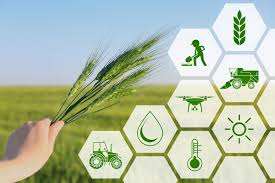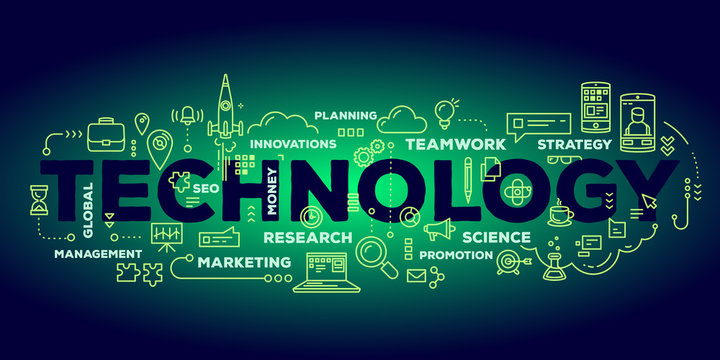The use of artificial intelligence in agriculture is making a huge impact across the world, with many industries looking to automate jobs using intelligent machinery. Even agriculture! This industry is one of the oldest and most important businesses globally, playing a huge role in the economic sector. The global population is expected to reach over 9 billion by 2050, requiring a 70% increase in agricultural production to meet demand. This requires a smarter approach to becoming more efficient about how we farm and be most productive. In this article, I will cover the challenges faced by farmers using traditional methods of farming and how AI is helping the world become a better place by replacing traditional methods with more efficient ones.
Artificial Intelligence has the potential to deliver much-needed solutions for the agriculture sector. Farmers are now able to produce more output with fewer inputs and even improve the quality of the output, as well as ensure faster go-to-market for yielded crops. By 2020, farmers will use 75 million connected devices, and by 2050, the average farm is expected to generate an average of 4.1 million data points every day. The industry is turning to artificial intelligence technologies to help yield healthier crops, control pests, monitor soil, and growing conditions, organize data for farmers, help with workloads, and improve a wide range of agronomic functions throughout the food supply chain. Using weather forecasts can help farmers plan the type of crop that can be grown and when seeds should be planted.
Artificial intelligence also helps farmers monitor soil and crop health, which is crucial to the success of any farm. This technology provides valuable insights into how to improve the health and productivity of crops, which is crucial for the agriculture sector. By using AI in agriculture, farmers can make informed decisions about how to manage their land and resources more effectively. Overall, the use of artificial intelligence in agriculture has the potential to revolutionize this industry and help it become more efficient and productive. It is a powerful tool that can be used to improve crop yields, control pests, monitor soil health, and many other important tasks in the agriculture sector. Soil type and nutrition play a vital role in crop quality, but deforestation has led to soil degradation making it harder to assess its quality.
AI-powered apps can help identify nutrient deficiencies, plant pests, and diseases by analyzing images of soil or crops. This technology can also suggest fertilizers that improve crop quality. Meanwhile, drone-based solutions like Skysqurrel Technologies provide aerial imaging for crop health analysis, helping farmers detect pests and bacteria in time. However, the agriculture sector still faces significant challenges such as the absence of irrigation systems, temperature fluctuations, and groundwater density. Despite ongoing research and available apps, more robust AI applications are required to effectively tackle these realistic challenges. As AI continues to evolve, agriculture is expected to shift towards precision farming for better yields and quality while using fewer resources.
Companies developing machine learning or AI-based products will see technological advancements in the future, providing more useful applications to address global food production issues driven by a growing population that will reach 10 billion by 2050, requiring a 70% increase in food production with only 4% additional land. The agriculture industry is set for a transformational change with the integration of AI technology. By leveraging AI, farmers can overcome challenges, improve quality, and increase yields. AI has numerous applications across sectors, including farming, where it can bring a paradigm shift. With AI-powered solutions, farmers can do more with less, while ensuring sustainable agricultural practices. AI is being rapidly adopted in agriculture in terms of agricultural products and in-field farming techniques. Some of the major applications of AI in agriculture include automated farming activities, identification of pest and disease outbreaks, managing crop quality, monitoring biotic and abiotic factors, and stress levels.
Computer vision technology and phenotypic data are also used for the purpose of making improvements. Cost reduction for vegetable production is also one of the advantages of irrigation systems developed based on AI, and the enterprise consequently becomes both sustainable and competitive in nature. Automated irrigation systems can also reduce environmental impacts that are created due to too much water consumption, provide maximum moisture content to the soil, and reduce the efforts required with regard to the quantum. Yet another place where AI steps in is crop health management through remote sensing techniques. Based on high-resolution images of the field taken through aerial vehicles such as copters or drones, the farmer is able to plot an accurate map of the field and locate spots in need of water, fertilizers, or pesticides.
This strategy optimizes resources to a great extent. The advantages of employing AI-based remote sensing tools are that they analyze crops more efficiently than traditional processes, which are primarily hierarchical and manual. Automated identification and analysis tools like digital allow farmers to generate useful information about disease, pest detection, identification of nutrient deficiencies, etc.
The use of various types of advanced methods such as spectroscopy, 3D mapping, and hyperspectral imaging offers the possibility of significantly increasing the number of measured crop traits and converting data into numerical values. This method allows the creation of a virtual world of phenotype information to be more accurately analyzed and determined in agricultural production. Unlike traditional methods, AI-based methods such as artificial neural networks (ANNs), genetic algorithms (GAs), and grey system theory (GST) can give accurate predictions and information about crop management and production. Such systems employ advanced software, sensors, and GPS to simplify agriculture, such as the employment of autonomous tractors and precise control of fertilization. Hortibot is an autonomous robot that uses GPS and weed-clearing tools in an attempt to detect and destroy 25 different types of weeds, offering an environmentally friendly and cost-effective solution for agriculture.
Precision farming also uses drones to assist farmers in mapping fields with low nitrogen content, managing weeds and diseases, and optimizing crop spraying. With advancements in AI and drone technology, they can accomplish a lot in revolutionizing the agriculture industry with real-time data, improved yields, and reduced wastage. With the potential to play key roles and make more meaningful contributions in the years to come, these technologies have the potential to change the future of agriculture for the better. The application of AI maximizes resources and efficiency and solves the problems of resource and manpower shortages. In agriculture, AI has the potential to start a technological revolution that can help global food production keep pace with the fast-growing world. With the use of AI, the farmer is able to make good decisions and optimize their techniques in a way that will get the maximum yield from their crop without any wastage.
Read Also:
- Artificial Intelligence In Agriculture
- Role Of Artificial Intelligence In Indian Agriculture
- Artificial Intelligence (AI) Techniques Used For Diseases Detection In Agriculture
- Study On Artificial Intelligence Applications Uses In Agriculture
- Importance Of Artificial Intelligence And Machine Learning In Agriculture
- Importance Of Artificial Intelligence And Machine Learning In Agriculture
- A Glimpse About Artificial Intelligence (AI) In Agriculture
- Benefits And Challenges Of Artificial Intelligence (AI) In Agriculture






